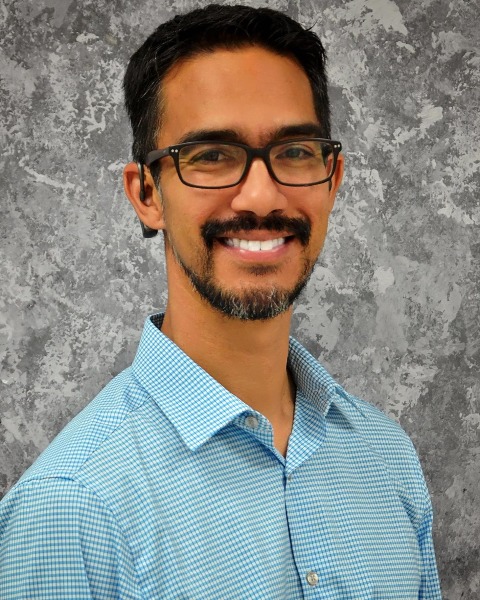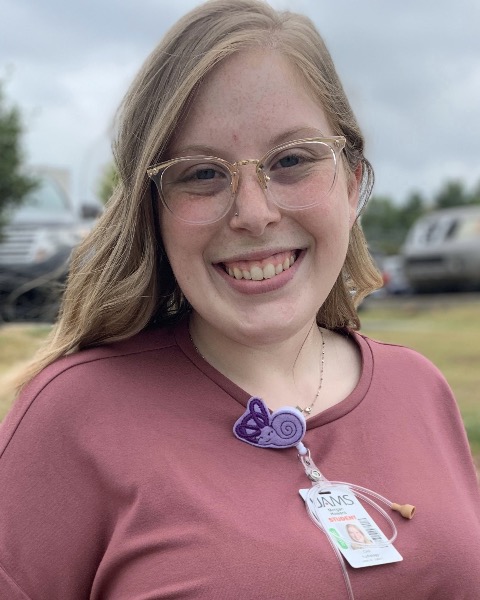Research (R)
(PP1302) Effect of Facemasks on Speech Acoustics Using International Speech Test Signal

Samuel R. Atcherson, PhD
Professor
University of Arkansas for Medical Sciences
LITTLE ROCK, Arkansas, United States.jpeg.jpg)
Abby Gragg, BS
Audiology Graduate student
University of Arkansas for Medical Sciences, United States.jpg)
Celeste Watson, BA
Audiology Graduate Student
University of Arkansas for Medical Sciences, United States
Morgan P. Howard, BS
Student
University of Arkansas for Medical Sciences
Little Rock, Arkansas, United States- BM
B. Renee McDowell, BS
4th year extern
University of Arkansas for Medical Sciences
Jacksonville, Arkansas, United States
Lead Presenter(s)
Presenter(s)
The widespread use of face coverings during the COVID-19 pandemic has created communication challenges for many individuals, particularly for those who are deaf/hard of hearing and for those who must speak through masks in suboptimal conditions. The purpose of this poster is to extend the previous work of acoustic analyses of commercially-available opaque and transparent face masks using speech signals and using an industry-standard head and torso simulator. In addition, material thickness will be measured to offer additional insights. Findings may inform decisions made by those who must continue to use masks/shields.
Summary:
Introduction: The novel coronavirus disease 2019 (COVID-19) brought many changes to daily life in 2020, including a recommendation by the Centers for Disease Control and Prevention (CDC) to wear face coverings over the mouth and nose (CDC, 2020). Consequently, many states and districts began to create mandates requiring citizens to wear masks in public places (Mendelson, 2020), some of which continues to this day. This new norm has challenged access to clear speech communication (Goldin et al., 2020; Tucci, 2020; Wolfe et al., 2020; Chodosh et al., 2020; Atcherson et al., 2020; Tucci, 2020; Eby et al., 2020; Corey et al., 2020; Atcherson et al., 2021; Saunders et al., 2021; Thibodeau et al., 2021), and more information is needed to understand various face covering options available to the public, particularly for those who are deaf/hard of hearing.
Purpose: The purpose of this study is to expand on some of the previous work by Goldin et al. (2020), Atcherson et al. (2020; 2021), and Corey et al. (2020). Atcherson et al. (2020) shared only preliminary data on a limited number of masks (Spring 2020) with and without a face shield, all in advance of schools and universities opening that could impact learning. Atcherson et al. (2021) was the first to report acoustic data on existing transparent masks, but since that time (Spring 2020 through Fall 2020), several additional transparent masks have surfaced, each with their individual pros and cons. Moreover, Atcherson et al. (2021) used white noise, while this study will 1) use the International Speech Test Signal (ISTS) (Holube et al., 2010, with permission) to examine overall amplitude frequency response differences, 2) examine spectrogram differences for standard pre-recorded sentences in English, and 3) measure material thicknesses as a possible explanation for any differences found.
Methods: We have obtained a variety of commercially-available masks and face shields for this study (handmade products will not be considered). A custom mouth simulator as the “talker” to place the various face coverings using a Tectonic TEBM35C10-4 2-in. full-range driver to present ISTS from a computer (Dell) and amplified (Realistic SA-150 amplifier). The Tectonic driver (loudspeaker) has a nominally flat on-axis frequency response between 100 Hz and 16 kHz. The acoustic output through various face coverings was recorded using a digital recorder (Tascam DR-660) and a Head and Torso Simulator (Bruel & Kjaer Type 4128C) as the “listener.” All recordings will take place inside of a double-walled audiology test suite with a distance of 6 ft between "talker" and "listener." In addition to these recordings, we will obtain representative, audiologically-standard, pre-recorded sentences to make spectrogram comparisons between various "no mask" and "mask" conditions. All recordings will be analyzed using appropriate audio software. Finally, material thickness of the masks will be measured using precision calibers to offer any additional explanations of acoustic differences.
Learning Objectives:
- Describe the impact of opaque and transparent face masks and shields on communication, particularly for deaf/hard of hearing individuals
